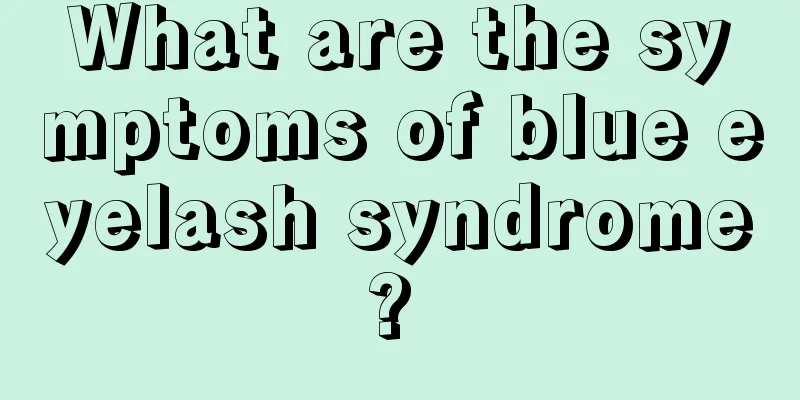What are the symptoms of blue eyelash syndrome?

|
Blue eyelash syndrome is actually a relatively common eye disease in life. Generally, this disease is related to personal fatigue and the onset is relatively sudden. Patients with blue eyelash syndrome will have more obvious symptoms, such as high intraocular pressure that lasts for a long time, mild discomfort, blurred vision, etc., so if friends find that there are problems with their vision, they must check their eye health. Glaucomatous cyclitis syndrome (Glaucomatous Cyclitis Syndrome), also known as glaucomatous cyclitis crisis or Posner-Shlossman syndrome, is a special form of anterior uveitis with glaucoma, mainly seen in young adults aged 20 to 50 years old. It is characterized by non-granulomatous uveitis with significantly increased intraocular pressure. It has an acute onset, mostly in one eye, and can recur. It is related to fatigue, especially mental fatigue and mental stress. The mechanism of occurrence is a prostaglandin-mediated inflammatory response. The clinical manifestations of inflammation are mild, with very mild local congestion and increased intraocular pressure, which usually have little effect on vision. Clinical manifestations 1. The disease occurs in one eye and recurringly in the same eye, and occasionally both eyes are affected. 2. The intraocular pressure increases paroxysmically and recurs repeatedly, with the intervals ranging from several months to 1 to 2 years. The intraocular pressure can be as high as 5.33~8.0kPa (40~60mmHg). Each attack of high intraocular pressure usually lasts 1~14 days and can recover on its own. A few may last for a month, and rarely for two months. 3. There are no subjective symptoms during an attack, only mild discomfort. Even at the peak of the attack, there are no obvious symptoms such as headache and eye pain like acute angle-closure glaucoma. 4. Vision is generally normal, but if there is corneal edema, vision will be blurred. 5. During the attack, the pupil is slightly larger and reacts to light. Although he had recurrent mild cyclitis, posterior synechiae never occurred. 6. Each attack presents as mild cyclitis, which often occurs within 3 days after the onset of high intraocular pressure. There are a few cells floating in the aqueous humor, and the aqueous humor flares are often negative. Corneal posterior wall deposits often appear within 3 days after the onset of the disease. They are grayish white, small or large and flat, and have a mutton-fat-like appearance. There are usually no more than 25 of them, and they are concentrated in the lower 1/3 of the cornea or hidden in the trabecular meshwork of the angle. The symptoms disappear within a few days to a month after the intraocular pressure returns to normal. KP may reappear or disappear when intraocular pressure fluctuates, so a comprehensive and detailed examination should be performed. |
<<: What are the treatments for papules and acne
>>: How do throat stones occur?
Recommend
How to preserve fresh wild mushrooms
Mushrooms are delicious edible fungi. They are no...
Can stomach cancer cause jaundice?
Gastric cancer is a common disease in life, and i...
Is tinning harmful to the body?
Nowadays, many people working in factories need t...
One side of the nose suddenly became hard and swollen
When you press one side of the nose with your han...
What is the cause of pain on the inside of the knee
When there is pain on the inner side of the knee,...
Pomegranate juice can inhibit the metastasis of prostate cancer cells
Some components contained in pomegranate juice ca...
What are the early symptoms of cervical cancer
Women can suffer from many cancer diseases, and c...
What to do if the heels of high heels rub your feet
High heels are the favorite of most women. Women ...
How to effectively treat acute cystitis
Acute cystitis affects and troubles many people. ...
Reflux esophagitis chest pain
Patients with reflux esophagitis not only cause t...
Three external treatments of lymph node enlargement caused by lymphoma with traditional Chinese medicine
The main symptom of lymphoma is palpable swollen ...
How should asthma be treated? Combining Chinese and Western medicine has good effect
Many people have heard of asthma, which is a dise...
Glue cleaner is not a panacea, this is how glue should be removed!
In our daily lives, we come into contact with var...
See how Cixi took care of her hair in ancient times
Cixi's bad hair was due to her weak kidney bl...
How much does a gastric cancer tumor marker test cost
The cost of gastric cancer tumor marker testing i...









